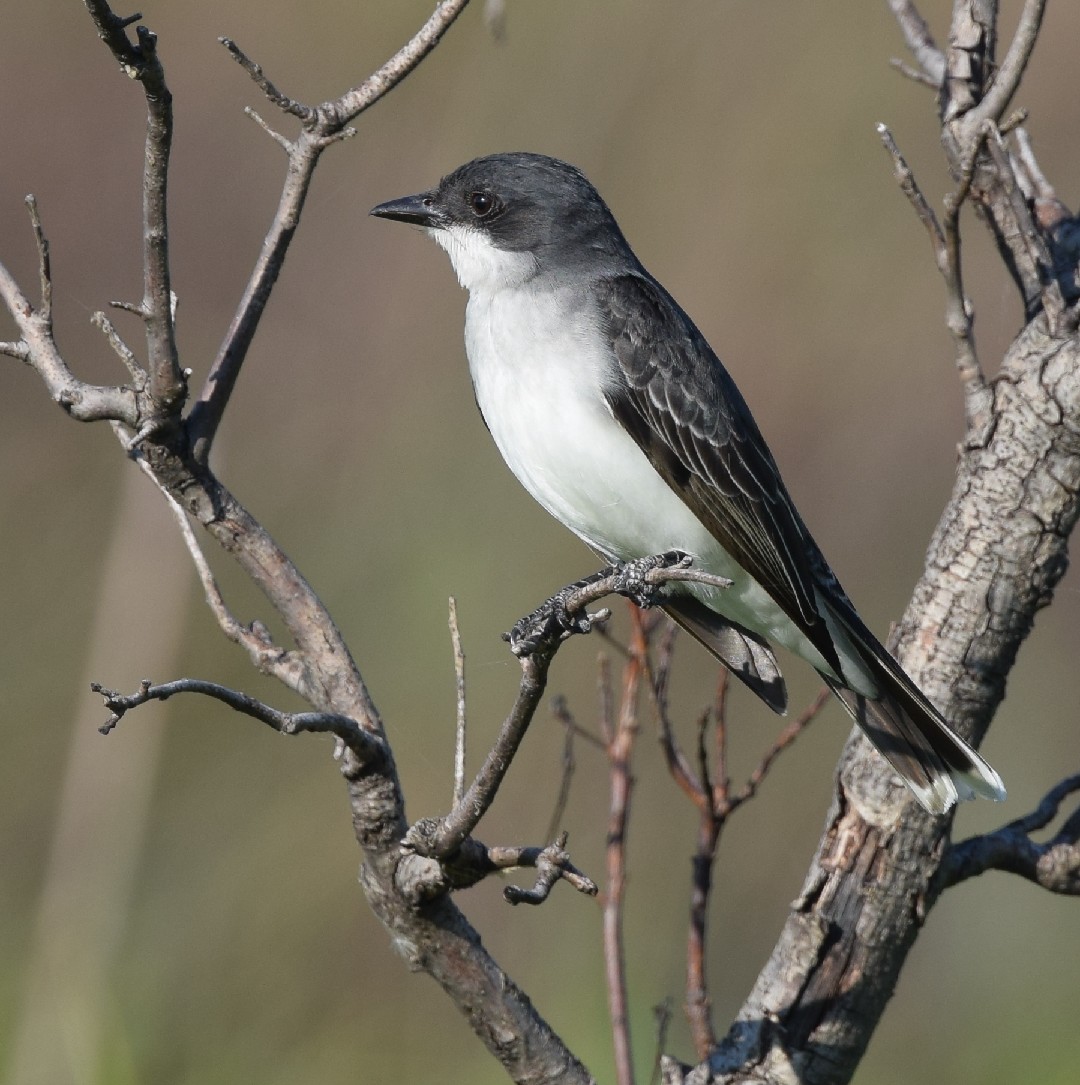Eastern Kingbird
A species of Kingbirds Scientific name : Tyrannus tyrannus Genus : Kingbirds
Eastern Kingbird, A species of Kingbirds
Botanical name: Tyrannus tyrannus
Genus: Kingbirds
Content
Description General Info
 Photo By Andy Reago & Chrissy McClarren , used under CC-BY-2.0 /Cropped and compressed from original
Photo By Andy Reago & Chrissy McClarren , used under CC-BY-2.0 /Cropped and compressed from original Description
The eastern Kingbird gets its name from its crown of colorful feathers. Usually concealed, when a potential predator looms the eastern Kingbird raises its bright crown, opens its big red mouth, and dive-bombs the potential attacker. They are unafraid when defending themselves against larger predators including hawks, crows, and even squirrels.
Size
22 cm (8.5 in)
Life Expectancy
9 years
Nest Placement
Tree
Clutch Size
2 - 5 eggs
Incubation Period
1 brood
Number of Broods
14 - 17 days
Nestling Period
16 - 17 days
Feeding Habits
Eastern Kingbird actively forage for insects midair, including a variety of bees, wasps, and other bugs. They perch and await passing prey, capturing larger insects to beat on perches before consumption. Smaller insects are ingested mid-flight. Besides insects, eastern Kingbird diet includes fruits like mulberries and cherries, especially during summer progression and primarily in wintering habitats.
Habitat
Eastern Kingbird typically inhabits open areas punctuated by shrubs and trees, including agricultural landscapes, riverbanks, and forest peripheries. They show a preference for regions near water, selecting nesting sites in vegetation overhanging aquatic environments. These birds are adaptable to various altitudes and climates, occupying territories from desert riparian zones to urban green spaces with mature trees. Eastern Kingbird's migratory journey extends to South America's western Amazonia, where they exploit forest canopies along waterways.
Nest Behavior
Females construct the nest mainly in mornings over 1-2 weeks, while males may guard or influence site choice. Eastern Kingbird demonstrates seasonal nest building and egg-laying, with attentive parental care from both sexes.
Nest Characteristics
Eastern Kingbird's nest is sturdily built up to 7 inches across and 6 inches deep, utilizing twigs, roots, bark, and occasionally man-made debris. The interior features a softer lining of rootlets and plant down for the 2-3 inch wide cup.
Dite type
Insectivorous
General Info
Feeding Habits
Bird food type
Bird Feeder Type

Platform
Sounds
Call
Recording location: United States
Song
Recording location: United States
Behavior
Eastern Kingbird display a captivating aerial prowess, predominantly indulging in mid-flight insect hunting that is characterized by swift, direct movements. Their day is punctuated by these agile forays, which occasionally involve a strategic flutter against the breeze to harvest prey atop grasses. This flight technique, pronounced during mutual mate greeting, points to a nuanced social structure where pair bonds, often renewed annually within familiar territories, play a crucial role. Intriguingly, eastern Kingbird may engage in extra-pair mating as suggested by genetic studies, and in rare instances, enact brood parasitism upon conspecifics. A fierce defender of its domain, the eastern Kingbird does not shy from combative encounters, engaging in intense aerial skirmishes or valiantly challenging predators to safeguard its progeny—a behavior correlating with increased reproductive success.
Distribution Area
Their breeding habitat is open areas across North America. They make a sturdy cup nest in a tree or shrub, sometimes on top of a stump or pole. These birds aggressively defend their territory, even against much larger birds. These birds migrate in flocks to South America. There are three European records, two from Ireland in October 2012 and September 2013, and one from Scotland in September 2016. 
Species Status
Not globally threatened.

 Photo By Andy Reago & Chrissy McClarren , used under CC-BY-2.0 /Cropped and compressed from original
Photo By Andy Reago & Chrissy McClarren , used under CC-BY-2.0 /Cropped and compressed from original Scientific Classification
Phylum
Chordates Class
Birds Order
Perching birds Family
Tyrant flycatchers Genus
Kingbirds Species
Eastern Kingbird